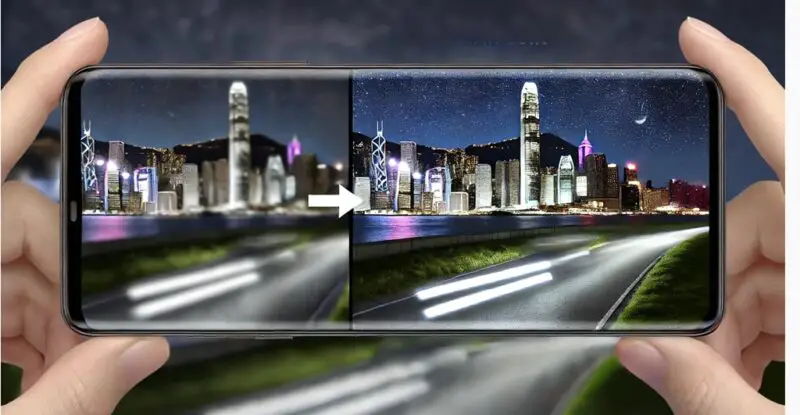Imagine a world where capturing the perfect photo is no longer a matter of chance but a guarantee, thanks to the magic of Artificial Intelligence (AI).
This is the world we live in today, where AI has revolutionized smartphone photography, turning everyday users into semi-professional photographers. From seamlessly blending multiple exposures to recognizing complex scenes and enhancing low-light photography, AI has pushed the boundaries of what’s possible with a smartphone camera.
Table of Content
Exploring How AI is Transforming Smartphone Photography Capabilities and Techniques
Computational Imaging
Computational imaging refers to the use of sophisticated algorithms to manipulate images digitally, bypassing the limitations of traditional optics. Modern smartphone cameras are essentially small computers with specialized computing cores designed to process digital information captured by the camera sensor.
The primary advantage of computational imaging is its ability to produce high-quality images even under challenging conditions. Techniques like multi-frame photography, where several photos are taken in quick succession at different exposure levels and stitched together, ensure evenly exposed images.
Additionally, computational methods can intelligently brighten and denoise pictures, enhancing their overall quality, especially in low light conditions. According to Android Central, this technology is the backbone of modern smartphone photography, allowing users to capture stunning images effortlessly.
AI Scene Recognition
AI scene recognition leverages machine learning algorithms to identify and optimize various elements within a photo. This includes distinguishing between people, landscapes, objects, and even specific scenes like blue skies, snowy landscapes, or urban skylines.
The ability to recognize and adjust for different scenes automatically enhances the overall quality of photos. For instance, Google’s Real Tone technology improves the accuracy of skin tones, particularly for people with darker skin, ensuring everyone looks their best.
Additionally, AI can identify specific subjects, such as dog breeds or bird species, providing users with more contextual information about their photos. As highlighted by Popular Photography, this feature transforms the smartphone camera into a versatile tool that adapts to a wide range of photographic scenarios.
AI-assisted HDR
HDR, or High Dynamic Range, photography captures multiple images at different exposure levels and combines them to create a single image with a wider dynamic range of luminosity. AI-assisted HDR uses advanced algorithms to merge these images, balancing highlights and shadows for a well-exposed final picture.
AI-assisted HDR is crucial for capturing high-quality images in challenging lighting conditions. Google’s HDR+, for example, employs algorithms to reduce ghosting, motion blur, and noise, enhancing the overall image quality. This technology ensures that photos taken in bright sunlight or dimly lit environments are equally stunning. Android Central emphasizes that AI-assisted HDR is a game-changer for smartphone photography, making it possible to capture professional-grade images with ease.
Night Mode AI

Night mode AI employs computational photography techniques to capture clear and detailed images in low-light conditions. It involves taking a series of images at different ISO and exposure settings and merging them to create a single, well-lit photo.
Features like Google’s Night Sight and Apple’s Deep Fusion are designed to compensate for movement during handheld shots, producing sharp and blur-free images even in low light. Additionally, modes like Google’s Astrophotography can capture clear images of the night sky by compensating for the Earth’s rotation. Popular Photography points out that these advancements make it possible to capture stunning night-time photos without the need for additional equipment.
Challenges and Ethical Considerations
While AI has significantly enhanced smartphone photography, it also raises questions about the authenticity and ethical implications of AI-generated content. The ability of AI to generate completely new images has led to debates about the authenticity and ownership of such content.
Addressing these concerns involves ensuring transparency and clear communication about AI processing pipelines. Professional bodies are particularly concerned about the impact of AI on traditional photography and the potential for AI to blur the boundaries between photographs and artwork.
According to Tech Xplore and The Hindu, it is crucial to address these ethical considerations to maintain the integrity and trustworthiness of photography as an art form.
Conclusion
AI has undeniably pushed the boundaries of smartphone photography, offering users advanced capabilities and techniques that were previously unimaginable. From computational imaging and AI scene recognition to AI-assisted HDR and night mode AI, these innovations have transformed the way we capture and experience images.
However, it is crucial to address the ethical implications and ensure transparency in AI processing to maintain the integrity of photography.
Sources
- What is computational photography? It’s the magic behind your phone’s camera | Android Central
- You’re already using computational photography, but that doesn’t mean you’re not a photographer | Popular Photography
- The camera never lied… until AI told it to | Tech Xplore
- Smartphone Camera AI: Companies compete to enhance photography experience | The Hindu
Your next step? Explore these AI-powered photography features on your smartphone and experience the transformation firsthand. Happy shooting!
